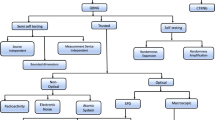Abstract
The similarity between classical wave mechanics and quantum mechanics was noted in the works of De Broglie, Schrödinger, “late” Einstein, Lamb, Lande, Mandel, Marshall, Santos, Boyer, and many others. We present a new wave model of quantum mechanics, the so-called prequantum classical statistical field theory, in which an analogy between some quantum phenomena and the classical theory of random fields is investigated. Quantum systems are interpreted as symbolic representations of such fields (not only for photons, cf. Lande and Lamb, but even for massive particles). All quantum averages and correlations (including composite systems in entangled states) can be represented as averages and correlations for classical random fields. We use the prequantum classical statistical field theory to obtain bunching and antibunching in the framework of classical signal theory. We note that antibunching at least is typically considered an essentially quantum (nonclassical) phenomenon.
Similar content being viewed by others
References
A. Plotnitsky, J. Modern Optics, 54, 2393–2402 (2007).
A. Plotnitsky, Epistemology and Probability: Bohr, Heisenberg, Schrödinger, and the Nature of Quantum-Theoretical Thinking (Fund. Theories Phys., Vol. 161), Springer, Berlin (2009).
W. H. Louisell, Quantum Statistical Properties of Radiation, Wiley, New York (1990).
L. Mandel and E. Wolf, Optical Coherence and Quantum Optics, Cambridge Univ. Press, Cambridge (1995).
M. O. Scully and M. S. Zubairy, Quantum Optics, Cambridge Univ. Press, Cambridge (1997).
L. de la Pea and A. Cetto, The Quantum Dice: An Introduction to Stochastic Electrodynamics (Fund. Theories Phys., Vol. 75), Kluwer, Dordrecht (1996).
A. Casado, T. Marshall, and E. Santos, J. Opt. Soc. Am. B, 14, 494–502 (1997).
G. Brida, M. Genovese, M. Gramegna, C. Novero, and E. Predazzi, Phys. Lett. A, 299, 121–124 (2002); arXiv:quant-ph/0203048v1 (2002).
T. H. Boyer, “A brief survey of stochastic electrodynamics,” in: Foundations of Radiation Theory and Quantum Electrodynamics (A. Barut, ed.), Plenum, New York (1980), p. 49–63.
D. C. Cole, A. Rueda, and K. Danley, Phys. Rev. A, 63, 054101 (2001).
Th. M. Nieuwenhuizen, “Classical phase space density for the relativistic hydrogen atom,” in: Quantum Theory: Reconsideration of Foundations (AIP Conf. Proc., Vol. 810, G. Adenier, A. Yu. Khrennikov, and Th. M. Nieuwenhuizen, eds.), AIP, Melville, N. Y., p. 198–210; arXiv:quant-ph/0511144v1 (2005).
E. Nelson, Quantum Fluctuation, Princeton Univ. Press, Princeton, N. J. (1985).
M. Davidson, J. Math. Phys., 20 (1865–1869).
M. Davidson, “Stochastic models of quantum mechanics — a perspective,” in: Foundations of Probability and Physics — 4 (AIP Conf. Proc., Vol. 889, G. Adenier, A. Yu. Khrennikov, and C. A. Fuchs, eds.), AIP, Melville, N. Y. (2007), p. 106–119; arXiv:quant-ph/0610046v1 (2006).
A. Bach, J. Math. Phys., 14, 125–132 (1981).
A. Bach, Phys. Lett. A, 73, 287–288 (1979).
V. I. Man’ko, J. Russian Laser Research, 17, 579–584 (1996).
V. I. Man’ko and E. V. Shchukin, J. Russian Laser Research, 22, 545–560 (2001).
Yu. M. Belousov and V.I. Man’ko, Density Matrix: Representations and Applications in Statistical Physics [in Russian], Moscow Inst. Phys. Tech., Moscow (2004).
M. A. Manko, V. I. Manko, and R. V. Mendes, J. Russian Laser Research, 27, 507–532 (2006).
S. De Nicola, R. Fedele, M. A. Manko, and V. I. Manko, J. Russian Laser Research, 25, 1–29 (2004).
G. ’t Hooft, “Quantum mechanics and determinism,” arXiv:hep-th/0105105v1 (2001).
G. ’t Hooft, “The free-will postulate in quantum mechanics,” arXiv:quant-ph/0701097v1 (2007).
H.-T. Elze, J. Phys. Conf. Ser., 174, 012009 (2009); arXiv:0906.1101v1 [quant-ph] (2009).
H.-T. Elze, J. Phys. Conf. Ser., 67, 012016 (2007); arXiv:0704.2559v1 [quant-ph] (2007).
V. V. Kisil, Europhys. Lett., 72, 873–879 (2005); arXiv:quant-ph/0506122v4 (2005).
A. Einstein and L. Infeld, The Evolution of Physics: The Growth of Ideas from Early Concepts to Relativity and Quanta, Cambridge Univ. Press, Cambridge (1961).
A. Khrennikov, J. Phys. A, 38, 9051–9073 (2005); arXiv:quant-ph/0505228v4 (2005).
A. Khrennikov, Found. Phys. Lett., 18, 637–650 (2005).
A. Khrennikov, Phys. Lett. A, 357, 171–176 (2006); arXiv:quant-ph/0602210v2 (2006).
A. Khrennikov, Found. Phys. Lett., 19, 299–319 (2006).
A. Khrennikov, Nuovo Cimento B, 121, 505–521 (2006); arXiv:hep-th/0604163v1 (2006).
A. Khrennikov, Phys. E, 42, 287–292 (2010).
A. Yu. Khrennikov, Theor. Math. Phys., 164, 1156–1162 (2010).
A. Khrennikov, Nuovo Cimento B, 121, 1005–1021 (2006).
M. Ohya and N. Watanabe, Japan. J. Appl. Math., 3, 197–206 (1986).
A. Khrennikov, J. Modern Opt., 55, 2257–2267 (2008).
A. Khrennikov, Europhys. Lett., 88, 40005 (2009).
A. Khrennikov, Europhys. Lett., 90, 40004 (2010).
A. Khrennikov, J. Russian Laser Research, 31, 191–200 (2010).
I. V. Volovich, “Photon antibunching, sub-Poisson statistics, and Cauchy-Bunyakovsky and Bell’s inequalities,” arXiv:1106.1892v1 [quant-ph] (2011).
I. Volovich, “Quantum cryptography in space and Bell’s theorem,” in: Foundations of Probability and Physics (Quantum Prob. White Noise Anal., Vol. 13, A. Khrennikov, ed.), World Scientific, River Edge, N. J. (2001), p. 364–372.
M. Ohya and I. Volovich, Mathematical Foundations of Quantum Information and Computation and Its Applications to Nano- and Bio-systems, Springer, New York (2011).
A. Khrennikov, Contextual Approach to Quantum Formalism (Fund. Theories Phys., Vol. 160), Springer, Dordrecht (2009).
A. Khrennikov, “Born’s rule from measurements of classical signals by threshold detectors which are properly calibrated,” arXiv:1105.4269v2 [quant-ph] (2011).
A. Khrennikov, M. Ohya, and N. Watanabe, J. Russian Laser Research, 31, 462–468 (2010).
Y.I. Ozhigov, Russian Microelectronics, 35, 53–65 (2006).
Y. I. Ozhigov, “Dynamical diffusion as the approximation of one quantum particle dynamics,” arXiv:quant-ph/0702237v2 (2007).
Y. I. Ozhigov, “Simulation of quantum dynamics via classical collective behavior,” arXiv:quant-ph/0602155v1 (2006).
J. von Neumann, Mathematical Foundations of Quantum Mechanics, Princeton Univ. Press, Princeton, N. J. (1955).
Author information
Authors and Affiliations
Corresponding author
Additional information
__________
Translated from Teoreticheskaya i Matematicheskaya Fizika, Vol. 172, No. 1, pp. 155–176, July, 2012.
Rights and permissions
About this article
Cite this article
Khrennikov, A.Y. View of bunching and antibunching from the standpoint of classical signals. Theor Math Phys 172, 1017–1034 (2012). https://doi.org/10.1007/s11232-012-0092-8
Received:
Revised:
Published:
Issue Date:
DOI: https://doi.org/10.1007/s11232-012-0092-8




